 W
WBeizhou or Bei Prefecture was a zhou (prefecture) in imperial China seated in modern Qinghe County in Hebei, China. It existed (intermittently) from 578 to 1048, when its name changed to En Prefecture after Wang Ze's rebellion in the prefecture.
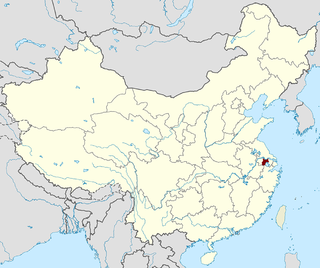 W
WChangzhou or Chang Prefecture was a zhou (prefecture) in imperial China, centering on modern Changzhou, Jiangsu, China. It existed (intermittently) from 589 until 1277, when the Yuan dynasty renamed it Changzhou Route.
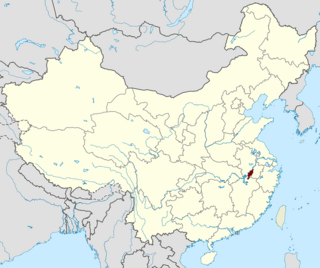 W
WChizhou or Chi Prefecture was a zhou (prefecture) in imperial China, centering on modern Chizhou, Anhui, China. It existed (intermittently) from 621 until 1277.
 W
WDai Prefecture, also known by its Chinese name Daizhou, was a prefecture (zhou) of imperial China in what is now northern Shanxi. It existed intermittently from AD 585 to 1912. Its eponymous seat Daizhou was located at Shangguan in Dai County. The territory it administered included all or part of what are now the counties of Dai, Wutai, Fanshi, and Yuanping in Shanxi's Xinzhou Prefecture.
 W
WDeng Prefecture was a prefecture of imperial China centering on modern Penglai, Shandong, China. It existed intermittently from 596 until 1376.
 W
WDuanzhou or Duan Prefecture was a zhou (prefecture) in imperial China in modern Guangdong, China, centering on modern Zhaoqing. Duan Prefecture was a major production center of inkstones.
 W
WEzhou is a prefecture-level city in eastern Hubei Province, China. As of the 2010 census, the city had a population of 1,048,668, of which 668,727 lived in the core Echeng District. The Ezhou - Huanggang built-up area was home to 1,035,496 inhabitants from the Echeng and Huangzhou, Huanggang Districts.
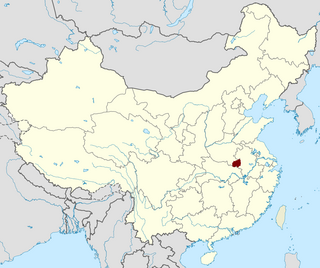 W
WGuang Prefecture was a prefecture of imperial China centered on modern Huangchuan County, Henan. It was created in the 6th century under the Liang dynasty and existed intermittently until 1913, after the establishment of the Republic.
 W
WGuangzhou, also known as Canton and formerly romanized as Kwangchow, is the capital and most populous city of the province of Guangdong in southern China. On the Pearl River about 120 km (75 mi) north-northwest of Hong Kong and 145 km (90 mi) north of Macau, Guangzhou has a history of over 2,200 years and was a major terminus of the maritime Silk Road, and continues to serve as a major port and transportation hub, as well as one of China's three largest cities.
 W
WHangzhou or Hang Prefecture (589–1129) was a zhou (prefecture) in imperial China located in modern northern Zhejiang, China, around modern Hangzhou. The prefecture was called Yuhang Commandery from 607 to 621 and from 742 to 758. Hang Prefecture was the capital of the Wuyue kingdom (907–978), inside which it was known as Xi Prefecture, and during its last years of the kingdom, as Qiantang Prefecture.
 W
WHuazhou or Hua Prefecture was a zhou (prefecture) in imperial China seated in modern Hua County, Henan, China. It existed (intermittently) from 596 to 1374. Through history it was also known by other names, including Yan Prefecture (606–607), Dong Commandery (607–618) and Lingchang Commandery (742–758).
 W
WHuazhou or Hua Prefecture was a zhou (prefecture) in imperial China seated in modern Hua County, Shaanxi, China. It existed (intermittently) from 554 to 1913. Through history it was also known by other names, including Tai Prefecture, Huayin Commandery (742–758) and Dexing Prefecture (897–900).
 W
WJiazhou or Jia Prefecture was a zhou (prefecture) in imperial China seated in modern Leshan, Sichuan, China. It existed (intermittently) from the 6th century to 1196. Between 742 and 758 it was known as Qianwei Commandery (犍為郡).
 W
WJingzhou is a prefecture-level city in southern Hubei province, China, located on the banks of the Yangtze River. Based on the 2010 census, its total population was 5,691,707, 1,154,086 of whom resided in the built-up area comprising two urban districts.
 W
WKui Prefecture, Kuizhou Circuit, or Kuizhou was initially established in 619 CE, as a renaming of the existing Xin Prefecture. Kuizhou was an important area from the beginning and through the end of the Tang Dynasty of China, when it was alternatively part of several of the Circuits which made up typical large scale political structural organizations of the Tang era. Kuizhou continued as a political entity through the end of the Song Dynasty, during which it was of Provincial level, a typical large scale political organization of Song era. Kui Prefecture was located in what is now eastern Chongqing. During the Song Dynasty, Kuizhou's capital was located in what is now Fengjie County, Chongqing, and the extent of the province was to what today includes Chongqing, eastern Sichuan, and Guizhou. Part of the importance of Kuizhou was related to its prominent location along the Yangzi River. Kui was also known for its spectacular scenerary, and being a location in which exiled poets wrote their laments.
 W
WLaizhou or Lai Prefecture was a zhou (prefecture) in imperial China, centering on modern Laizhou, Shandong, China. It existed (intermittently) from 585 until 1376.
 W
WLeizhou or Lei Prefecture was a zhou (prefecture) in imperial China in Leizhou Peninsula, Guangdong. It existed from 634 to 1329, but between 742 and 758 it was known as Haikang Commandery.
 W
WLianzhou or Lian Prefecture was a zhou (prefecture) in imperial China in modern northwestern Guangdong, China. It existed (intermittently) from 590 to 1912. Between mid-600s and 621 it was known as Xiping Commandery, and between 742 and 758 as Lianshan Commandery.
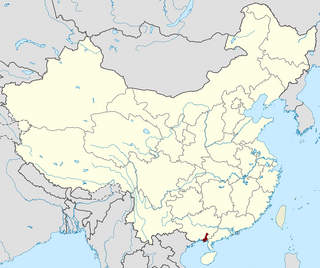 W
WLianzhou or Lian Prefecture was a zhou (prefecture) in imperial China in modern Guangxi, China. It existed (intermittently) from 634 to 1381. Between 742 and 758 it was known as Hepu Commandery.
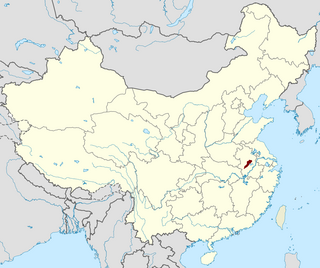 W
WLuzhou or Lu Prefecture was a zhou (prefecture) in imperial China centering on modern Hefei, Anhui, China. It existed (intermittently) from 581 to 1277.
 W
WMizhou or Mi Prefecture was a zhou (prefecture) in imperial China in modern southeastern Shandong, China. It existed (intermittently) from 585 until 1368 upon the foundation of the Ming dynasty.
 W
WMingzhou or Ming Prefecture (738–1194) was a zhou (prefecture) in imperial China located in modern northeastern Zhejiang, China, around modern Ningbo. The prefecture was called Yuyao Commandery from 742 to 758.
 W
WQīnzhōu or Qīn Prefecture was a zhou (prefecture) in imperial China in modern Guangxi, China. It existed (intermittently) from 598 to 1912. Between 607–621 and 742–758 it was known as Ningyue Commandery.
 W
WQingzhou or Qing Prefecture was a zhou (prefecture) in imperial China centering on modern Qingzhou, Shandong, China. It existed (intermittently) from 596 to 1125.
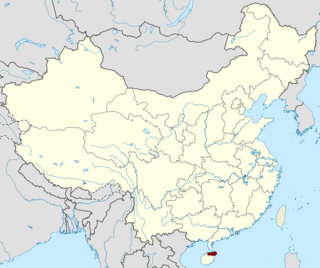 W
WQiongzhou or Qiong Prefecture was a zhou (prefecture) in imperial China in modern northeastern Hainan, China. It existed from 631 to 1329, but between 742 and 758 it was known as Qiongshan Commandery.
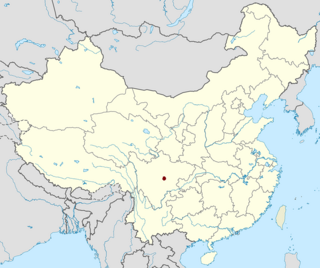 W
WQiongzhou or Qiong Prefecture was a zhou (prefecture) in imperial China seated in modern Qionglai City in Sichuan, China. It existed (intermittently) from the 6th century to 1913. Between 742 and 758 it was known as Linqiong Commandery.
 W
WWan'an Zhou or Wan'an Prefecture was a zhou (prefecture) in imperial China in modern southeastern Hainan, China. It existed from 662 to 1368, but between 742 and 757 it was known as Wan'an Commandery, and between 757 and 758 as Wanquan Commandery. The Song dynasty made it a military prefecture in 1074.
 W
WWeizhou or Wei Prefecture was a zhou (prefecture) in imperial China centering on modern Weifang, Shandong, China. It existed (intermittently) from 596 until 1376 not long after the founding of the Ming dynasty.
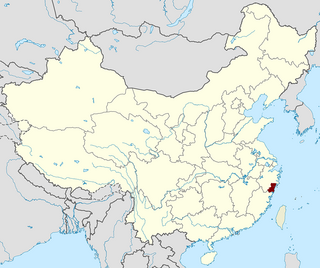 W
WWenzhou or Wen Prefecture was a zhou (prefecture) in imperial China, centering on modern Wenzhou, Zhejiang, China. It existed (intermittently) from 675 to 1265, when the Song dynasty renamed it Rui'an Prefecture.
 W
WYanzhou or Yan Prefecture was a zhou (prefecture) in imperial China centering on modern Yanzhou District, Jining, Shandong, China. It existed (intermittently) until 1385, when the Ming dynasty created Yanzhou Prefecture.
 W
WYizhou or Yi Prefecture was a zhou (prefecture) in imperial China centering on modern Linyi, Shandong, China. It existed (intermittently) from 578 until 1734, when it was recreated as Yizhou Prefecture by the Qing dynasty.
 W
WYingzhou or Ying Prefecture was a zhou (prefecture) in imperial China in modern Hebei, China, seated in modern Hejian. It existed (intermittently) from 487 until 1108.
 W
WYuezhou or Yue Prefecture was a zhou (prefecture) in imperial China in modern Zhejiang, China, centering on modern Shaoxing. It existed (intermittently) from 605 until 1131, when it became Shaoxing Prefecture.
 W
WYunzhou or Yun Prefecture was a zhou (prefecture) in imperial China in modern southwestern Shandong, China. It existed (intermittently) from 590 to 1109.
 W
WZhengzhou or Zheng Prefecture was a zhou (prefecture) in imperial China centering on modern Zhengzhou, Henan, China. It existed (intermittently) from 583 until 1913 after the foundation of the Republic.
 W
WZizhou or Zi Prefecture was a zhou (prefecture) in imperial China centering on modern Zibo, Shandong, China. It existed (intermittently) from 596 until 1264.